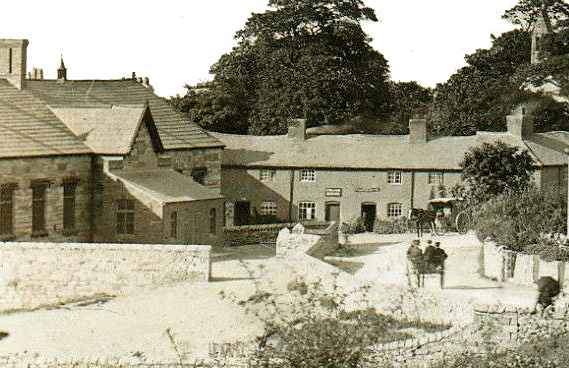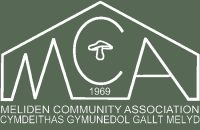
Meliden National School with Tai Cochion, an L-shaped terrace which lay in what has become the Red Lion car park.
An Inspector Calls at Meliden National School
The new Meliden National School building had been in use for five years when on the morning of February 22, 1847 Mr. John James arrived. He was an inspector, or to be more accurate, he was an Assistant Commissioner for the public enquiry which had been set up to examine the state of education in Wales.
Although there were 146 children on the school register, on the day of inspection 55 children were absent! He discovered that all the pupils were being taught by two teachers, aided by 8 monitors in two classrooms. They were taught reading, writing, arithmetic, history, the scriptures and the Church Catechism. The inspector did not see any examples of good writing and of the 39 learning arithmetic, 31 did not understand the first four rules and none of the remaining 8 understood rule 3. (I think he’s talking about those things we used to call add-ems, take-aways, divides and timeses but I went to the same school so I’m not sure.) He found that they had heard of mental arithmetic but knew little about it. Only two possessed a competent knowledge of Scripture and he even found one scholar who said that Calvary was on the Mount of Olives. At this point it is worth recounting the old story which may or may not be true. A frightened child was made to stand on on a box.
“The River Jordan flows through Egypt ….. does it not boy?”
“Oh Yes, sir.”
What else could the boy say? This important stranger believed that the Jordan flowed through Egypt, so why disagree? In truth, many Welsh children knew their Bible better than their tormentors—their Welsh Bible. It is possible that the inspector was acting under instructions and the inquiry was being steered from London. He goes on to say, ‘….. the parents dislike the use of Welsh in any way, believing that the exclusive use of English is more conductive to the speedy acquirement of that language.’
Then he turns his attention to the teachers. The master is 28, having been teaching four years without any training. He understands English pretty well and the minister is giving him grammar lessons. [That would be the fiery Robert Hughes of Seion Chapel—blacksmith, preacher and dentist.] The master’s teaching is unsystematic and the children are of mixed ability in the same classes. [That made no sense in 1847 but is quite usual these days.] The monitors were all incompetent. He noted that one had a speech impediment and another did not know who wrote the gospel according to St. Matthew. [A man in his position should have known better on both counts. When you think about it, the schoolmaster was inspired because he was teaching mixed ability groups and was doing his best to help the child with the impediment in a practical way.] The mistress doesn’t receive much attention, presumably because she is a woman. She understands English but speaks very ungrammatically, nevertheless, he approves of the fact that she teaches needlework every afternoon. He ends his report by describing the school building as being a very good one but criticises the stone floor and the drains. There is a strange reference to the boys and girls using the same path.
The report makes little sense until the penny drops—the inspection was carried out entirely in English. Even half a century later in 1891, the census recorded that hardly any of children spoke English. The report became known as The Treason of the Blue Books. It insinuated that Welsh children were ignorant, uneducated and dirty with mothers who were morally lax. The conclusion was that education could only take place in the English language and the inability to speak that language was the reason for the failure of education in Wales. They were soon to discover that the same problems existed in England—where they nearly all spoke English!
,